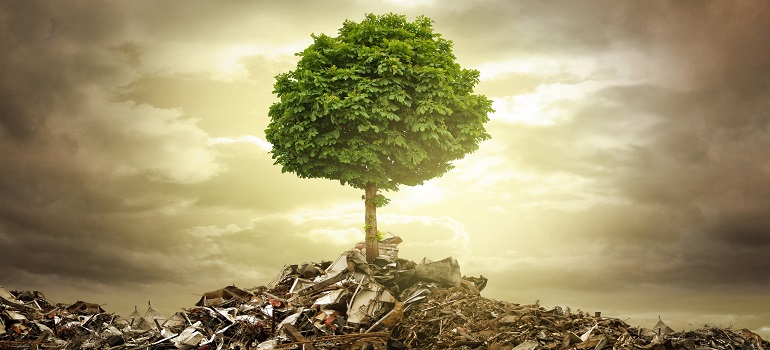
What is waste management?
Waste management is more than collecting garbage and putting it into landfill, drain or air. Industries routinely use hazardous materials that, when handled without accurate knowledge, pose a threat to human health and the environment. These materials are present around us in many form such as CFL, electronic devices, and certain batteries, as well as in substances like oil, solvents and related chemicals.
How can ISO 14001 help?
ISO 14001 provides a structured framework and realistic approach to handle waste. While identifying and evaluating environmental aspects, you will determine what wastes are emerging in your processes, and with operational controls you will define how the waste will be treated. There are instances when organizations realize that there are number of unseen wastes that are involved in the process. These waste are contributing to cost for the organization.
How to Handle Waste?
Waste handling and waste management can be two separate things. Waste management is the processing of wastes generated, and it has a number of solutions for waste handling. This is a process that each and every organization in the world needs. It is the responsibility of the occupier of the factory to dispose the waste safety and appropriately as per the local government regulations. ISO 14001 doesn’t bound anyone to have specified steps in waste handling, and every organization can approach it according to its suitability, but there are some common steps which can be used by every organization:
Waste Evaluation
ISO 14001 Planning clause (6) guides the organizations to identify their aspects, significant aspects and their environmental impacts. While determining the wastes organization shall identify whether it is handling any hazardous waste? If yes, what can be the possible impact of the waste on the environment. Does the organization have sufficient provision to handle the waste as per local regulation? Answers to all these questions will help in providing a clear image of the waste management of the company.
Waste Storage
Availability of space with appropriate storage facilities is a routine and continuous problem for industries. Depending on the type of waste that organization have, there will be different requirements in terms of storage facilities. Waste can be in solid or liquid form, so it is important to store it according to its MSDS or as specified. Hazardous waste must be stored with due safety so that it does not create any further issue. There can be different temperature and pressure conditions for storage of types of waste. The container in which the waste is stored must be labeled with the words “Hazardous Waste“, a clear description of the contents, and the date when the waste is first placed in the container. Handling of the containers as and when required shall also be considered while storing hazardous waste.
Waste Labelling
Hazardous waste labelling is a requirement in The Factories Act, 1948. While labelling the hazardous waste one shall be very clear on the date of placement of waste, quantity and more precisely he/ she shall be aware of emergency response in case anything happens. There are licenses also for generating a specific type of hazardous waste.
Transport and dispose of waste
Before or after the organization is responsible for the hazardous waste it has produced in the process. To ensure that hazardous waste is safely transported, disposed as per local regulations, and to reduce your liability, choose vendors that fulfills the following requirements:
Is approved from government to collect hazardous waste
Has fulfilled safety training requirements
Has all required papers in place
Takes responsibility
Transports the waste to an authorized hazardous waste vendor
Emergency Planning
ISO 14001 has a special clause for describing and handling emergencies, handling hazardous waste can cause emergency situations caused by mistreatment of the waste or any other cause. Organization shall plan for the possible emergency situation that can impact the environment in any possible way. Generally, organizations prepare emergency response plan for on-site only while accidents can happen off-site also. Imagine you dispatched a truck full of hazardous chemical and it tripped on the national highway causing the chemical to flow freely on the road.
Training and Competence
Trainings are inexpensive, if, done correctly. Training personnel will certainly help in building a stronger and leaner process that can give highest productivity in terms of cost, waste and material output. Training interested parties in handling, storing, or managing hazardous waste is a necessary step for fulfilling compliance. Personnel must be familiar with each environmental aspect their impacts, appropriate safety procedures, and compliance that are relevant to them. In the process of implementing a waste management system, the training should be conducted by professionals who have worked on the creation of the waste management plan.

Record keeping always help. In hazardous waste management Hazardous waste management rules clearly state that organizations shall sell the hazardous waste to authorized vendor only. There are 7 different colour receipts that are held and circulated between seller, receiver and government. These records demonstrate the amount, type, source etc for future reference purpose.
Bibliography:
Image Source: https://wallpapersafari.com/garbage-wallpapers/


